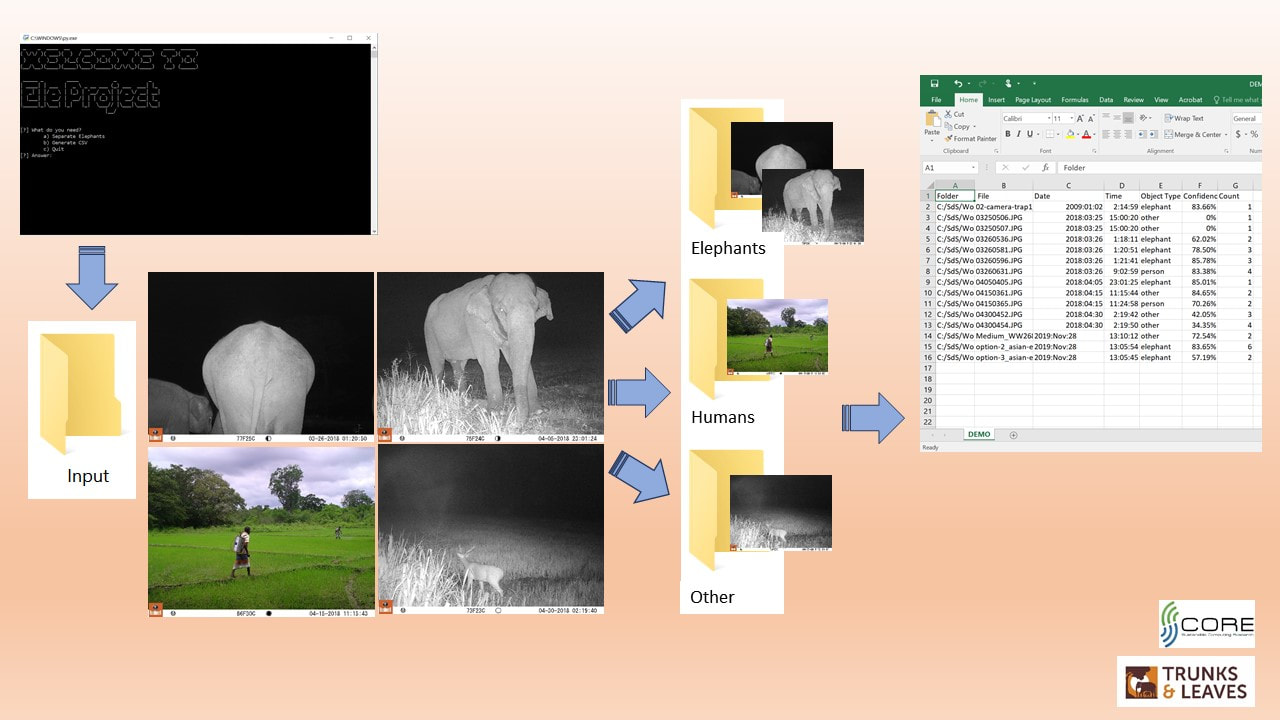|
One of the greatest challenges to protecting elephants is simply knowing where they are. Despite their size, elephants can be remarkably difficult to spot and count. We are collaborating with the Sustainable Computing Research (SCORE) Lab at the University of Colombo to develop software to facilitate the study and conservation of Asian elephants. Below are some of the things we are working on.
|
|
Automated Classification of Elephant Photographs |
|
Camera trap photos
|
The use of trail cameras to study wildlife is now ubiquitous, resulting in huge volumes of data. There are already several Artificial Intelligence (AI) algorithms that have been developed to classify photos. We are refining on these techniques to better identify elephants, humans, other animals, and object types from camera trap images with a light-weight software program that can run on a regular laptop computer. We hope to thereby cut down the human labor required for cataloguing photos, though human eyes will still invariably need to check and validate results, as well as make more nuanced judgements about species and events that are recorded.
Our goal is to release this tool more widely to the research and conservation community when it is ready to enable more efficient sorting of elephant images, and encourage data sharing across various monitoring initiatives and reputed authorities such as the Asian Elephant Specialist Group in order to have better data on where wild Asian elephants occur around the world. |
Individual Identification
|
Individual-based data is the gold-standard for research because it enables so many different kinds of inquiry, from animal behavior to demography. Individual-based studies of Asian elephants, if they are of large populations, face the limitations of human memory. Even aided by photographs, it can become extremely cumbersome and labor-intensive to maintain individual identifications. Can AI help?
Various promising techniques have been developed that offer the potential to classify individual elephants, provided that there are sufficient high-quality photos of each individual to train the algorithms with. The photographic records of the Udawalawe Elephant Research Project currently constitutes the largest volume of known and labelled individual records available for wild Asian elephants. We are using these data to evaluate whether automated classification is practical or feasible for photographs taken in the wild, under normal field conditions. |
|
EleWatch Mobile Ap |
|
|
The majority of Asian elephant populations are found outside protected areas. Smartphones are now commonly used for collecting various types of natural history data. the EleWatch Mobile Ap is being developed to allow the general public to submit useful information about wild elephants that are spotted outside protected areas, again with the aim of better documenting elephant distributions. The Ap will be paired with a web-based dashboard to allow general users as well as researchers to track observations. Data visibility and usage restrictions will contain safeguards to prevent the use of this information for illegal activities.
We are currently in beta testing phase, with limited release planned for later in 2020. |








